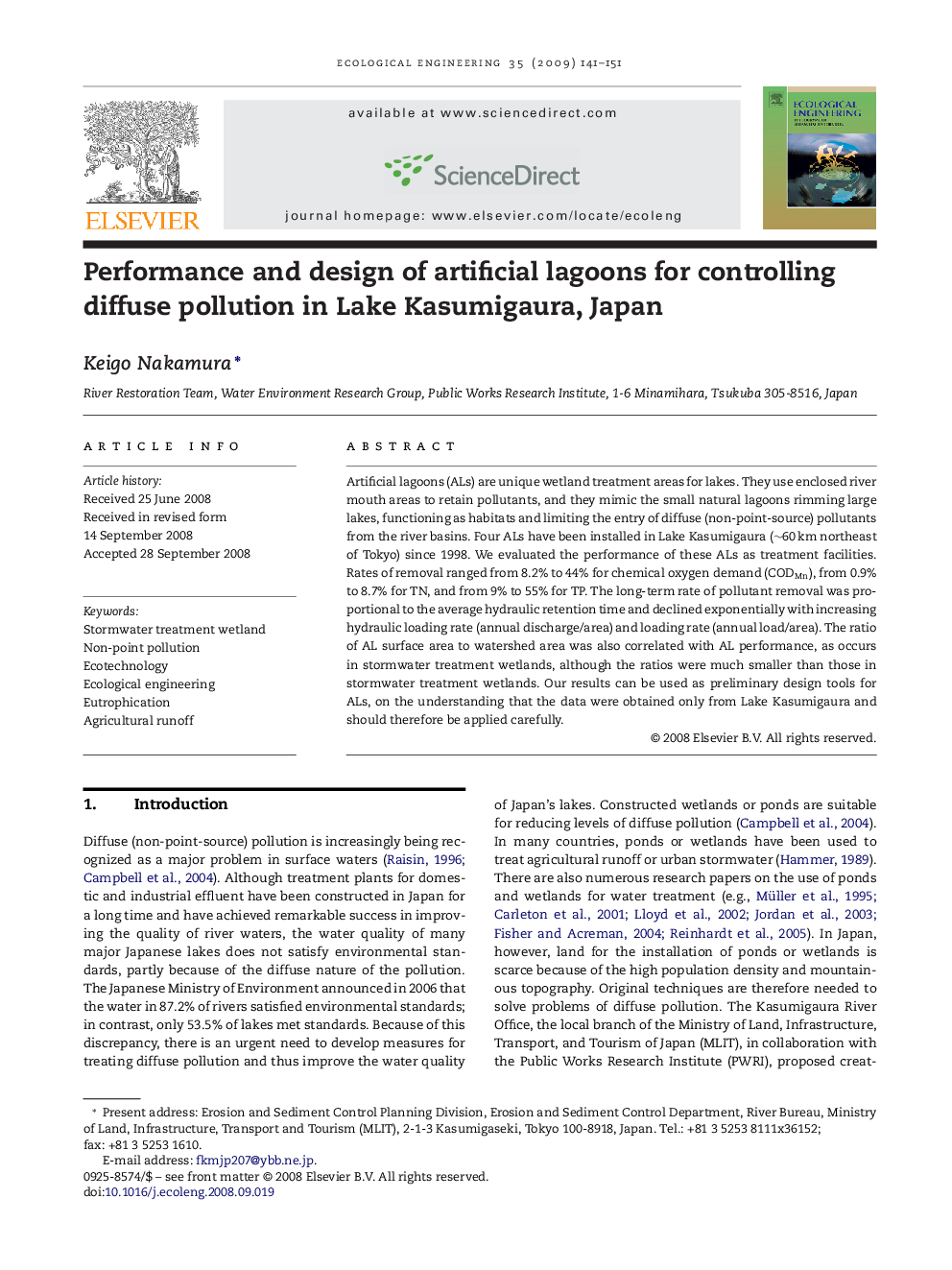| Article ID | Journal | Published Year | Pages | File Type |
|---|---|---|---|---|
| 4390670 | Ecological Engineering | 2009 | 11 Pages |
Abstract
Artificial lagoons (ALs) are unique wetland treatment areas for lakes. They use enclosed river mouth areas to retain pollutants, and they mimic the small natural lagoons rimming large lakes, functioning as habitats and limiting the entry of diffuse (non-point-source) pollutants from the river basins. Four ALs have been installed in Lake Kasumigaura (â¼60Â km northeast of Tokyo) since 1998. We evaluated the performance of these ALs as treatment facilities. Rates of removal ranged from 8.2% to 44% for chemical oxygen demand (CODMn), from 0.9% to 8.7% for TN, and from 9% to 55% for TP. The long-term rate of pollutant removal was proportional to the average hydraulic retention time and declined exponentially with increasing hydraulic loading rate (annual discharge/area) and loading rate (annual load/area). The ratio of AL surface area to watershed area was also correlated with AL performance, as occurs in stormwater treatment wetlands, although the ratios were much smaller than those in stormwater treatment wetlands. Our results can be used as preliminary design tools for ALs, on the understanding that the data were obtained only from Lake Kasumigaura and should therefore be applied carefully.
Related Topics
Life Sciences
Agricultural and Biological Sciences
Ecology, Evolution, Behavior and Systematics
Authors
Keigo Nakamura,
